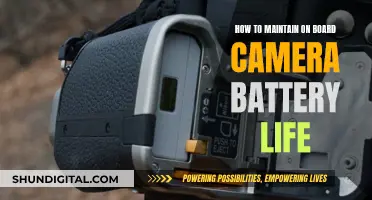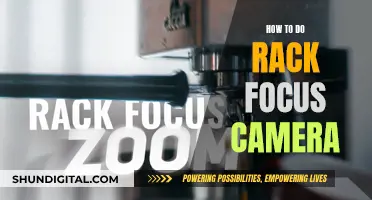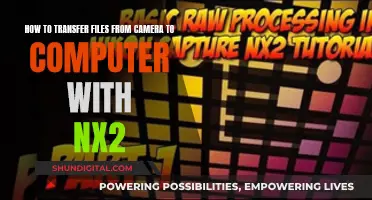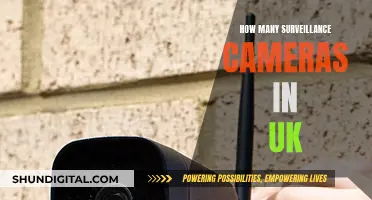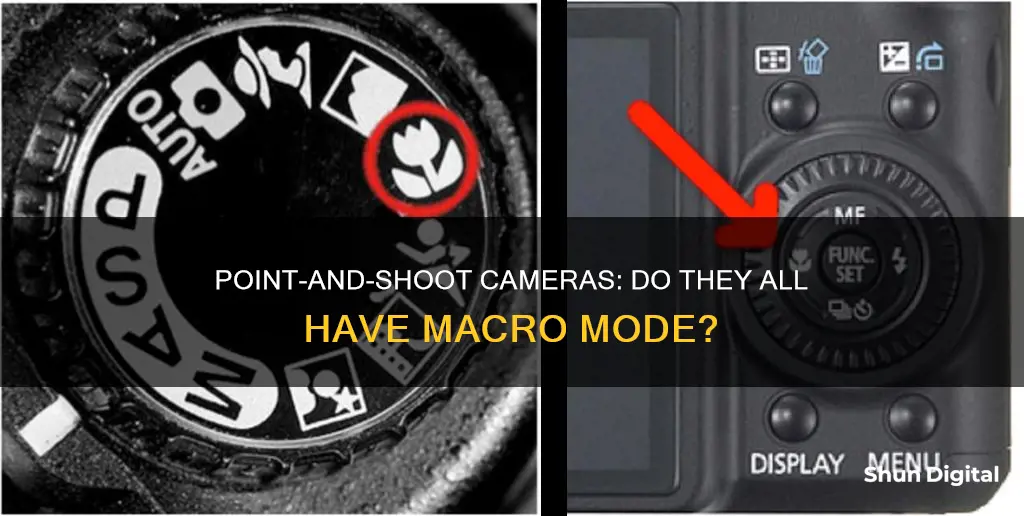
Point-and-shoot cameras are a great option for those who want something more than a smartphone camera but are not willing to haul around a heavy SLR or mirrorless camera. While not all point-and-shoot cameras have a macro mode, many do, and it is a feature worth looking out for. Macro mode is generally symbolised by a little flower and, when selected, will allow you to focus on a subject much closer to your lens than normal.
The macro mode on a point-and-shoot camera will probably not give you the same results as a DSLR with a purpose-built macro lens, but it can still produce remarkably good shots. In addition to the macro mode feature, some point-and-shoot cameras have a Super Macro or Microscope mode that automatically zooms the lens to a longer fixed focal length to maximise image quality and magnifying power.
If you are looking for a point-and-shoot camera with a macro mode, some options to consider include the Nikon Coolpix P950 and P1000, the Sony Cyber-shot RX100 VII, the Canon PowerShot G7 X Mark III, the Fujifilm X100VI, and the Olympus Tough TG-7.
| Characteristics | Values |
|---|---|
| Purpose | Capturing images of small objects, such as flowers, insects, jewelry, etc. |
| Camera type | Point-and-shoot cameras |
| Camera models | Nikon Coolpix P950, Sony Cyber-shot RX100 VII, Canon PowerShot G7 X Mark III, Fujifilm X100VI, etc. |
| Features | Macro mode, image stabilization, dynamic fine zoom, etc. |
What You'll Learn

How to select macro mode on a point-and-shoot camera
Selecting the macro mode on a point-and-shoot camera is usually done by clicking on a flower-shaped icon on the camera's controls. This will allow you to focus on subjects closer to your lens than normal. The minimum focus distance will vary depending on the camera model, so be sure to consult your instruction manual.
When in macro mode, your camera will usually choose a large aperture, keeping your subject in focus while blurring the background. You may be able to adjust your aperture settings manually, in which case you should choose a small aperture (large f-number) for a large depth of field, or a large aperture for a shallow depth of field with your main subject in focus.
In addition to selecting the macro mode, there are several other steps you can take to improve your macro photography:
- Use a tripod to stabilise your camera and reduce camera shake.
- Pay attention to lighting and consider using a flash or reflector to illuminate your subject.
- Use the rule of thirds and other basic composition techniques to create visually appealing images.
- If your camera has a tiltable or variable-angle LCD, use this feature to compose your shots more easily.
Creating Camera Raw Profiles: A Step-by-Step Guide
You may want to see also

Point-and-shoot cameras with the best macro capabilities
When it comes to point-and-shoot cameras with the best macro capabilities, there are a few options that stand out. Here are some detailed recommendations:
Olympus OM System Tough TG-7
The Olympus OM System Tough TG-7 is a rugged and durable camera that is perfect for outdoor adventures. It is waterproof, dustproof, shockproof, and freezeproof, making it an ideal companion for photographers who love exploring nature. The camera has a 12MP resolution and features dedicated macro modes with a minimum focusing distance of 0.4 inches (1 cm), allowing for extreme close-ups. It also offers 4K video recording, making it a versatile option for both photos and videos.
Canon PowerShot G7 X Mark III
The Canon PowerShot G7 X Mark III is a powerful point-and-shoot camera with a 20.1MP sensor and DIGIC 8 processor, delivering sharp and fast image capture. It also features a tilting touch-panel LCD screen for convenient operation and easy composition. While it doesn't have the toughest body, it is a good choice for those who want a lightweight and compact camera with strong performance.
Sony Cyber-shot RX100 VII
The Sony Cyber-shot RX100 VII is a premium point-and-shoot camera that delivers exceptional image quality and advanced features. It has a 20.1MP stacked CMOS sensor, allowing for fast autofocus and continuous shooting at up to 60 times per second. The camera also offers a 24-200mm f/2.8-4.5 zoom lens, making it versatile for various shooting situations. It is an excellent choice for those seeking a high-end point-and-shoot camera.
Fujifilm X-Series X100VI
The Fujifilm X-Series X100VI is a highly recommended camera for those seeking portability without compromising image quality. It features a 40.2MP sensor and Fujifilm's latest X-Trans CMOS 5 HR sensor, delivering stunning images and videos. The camera also has a hybrid viewfinder, a tilting LCD screen, and advanced autofocus capabilities. It is a great choice for photographers who want a compact and stylish camera without sacrificing performance.
Nikon Coolpix P950
The Nikon Coolpix P950 is a versatile point-and-shoot camera with a 16MP low-light lens and VR stabilization, ensuring sharp and clear images. It offers dynamic fine zoom capabilities and a built-in LCD with multiple viewing angles. The camera is highly rated by users, who praise its simplicity and excellent macro capabilities. It is a good option for those seeking an affordable and easy-to-use camera with strong macro performance.
Replacing Your Vivint Doorbell Camera Battery: A Step-by-Step Guide
You may want to see also

Macro mode vs. telephoto lens
Macro mode and telephoto lenses are two distinct types of camera lenses with different purposes and characteristics. Macro mode is a setting available on many point-and-shoot cameras, allowing them to focus on subjects at a closer distance than usual. On the other hand, telephoto lenses are characterised by their longer focal lengths, which result in a narrower field of view and the appearance of magnification.
Macro Mode
Macro mode is a feature found on many point-and-shoot cameras that enables them to focus on subjects at shorter distances than typical. It is denoted by a flower symbol on the camera's controls. When selected, the camera will focus on objects closer to the lens than usual, with the minimum distance varying depending on the camera model. Macro mode also typically instructs the camera to use a large aperture, ensuring that the subject is in focus while the background is blurred.
Some point-and-shoot cameras also offer a "Super Macro" or "Microscope" mode, which automatically zooms in to maximise image quality and magnifying power. While the results may not compare to those achieved with a DSLR and a dedicated macro lens, compact cameras with macro mode can still produce remarkably good macro photographs.
Telephoto Lenses
Telephoto lenses, on the other hand, are designed to bring distant subjects closer, making them appear magnified. They are typically divided into two groups: medium telephoto (around 70mm to 200mm focal length) and super telephoto (300mm or greater). Telephoto lenses have a relatively long minimum focusing distance, making them unsuitable for extreme close-ups. They also offer lower magnification capabilities compared to macro lenses.
One advantage of telephoto lenses for macro photography is the increased working distance from the subject, reducing the risk of disturbing the subject or casting shadows over it. Additionally, the longer focal lengths of telephoto lenses can produce more appealing bokeh effects compared to shorter lenses.
In summary, macro mode on point-and-shoot cameras allows for close-up photography of small subjects, while telephoto lenses are designed for capturing distant scenes and subjects with apparent magnification. The choice between the two depends on the photographer's goals and subjects. Macro mode is ideal for capturing intricate details of small objects, while telephoto lenses excel in wildlife, sports, and portrait photography, where distance from the subject is necessary.
Charging Your Subnautica Drone: A Step-by-Step Guide
You may want to see also

Macro mode and autofocus
When shooting in Macro mode, the camera will automatically adjust the focus to a closer distance than normal. This is represented by a flower symbol on the camera. The minimum focus distance will vary from camera to camera, so it is important to consult the instruction manual. Macro mode will also usually tell the camera to use a large aperture, keeping the subject in focus while blurring the background.
Autofocus, on the other hand, is when the camera decides on the best settings, eliminating user intervention. Autofocus is useful when shooting moving subjects, such as insects, but it can struggle with very small subjects, such as insects' eyes, and may cause more problems than it solves when shooting macro photography. In these cases, manual focus is often preferred.
Charging the FinePix XP120: A Step-by-Step Guide
You may want to see also

Macro mode and aperture
Macro mode is a setting on many point-and-shoot cameras that allows you to focus on subjects that are closer to the lens than usual. It is often denoted by a flower symbol. When you select this mode, the camera will automatically choose a large aperture so that your subject is in focus against a blurred background.
Aperture refers to the opening in the lens through which light passes to enter the camera. It is measured in f-stops, denoted by f-numbers, such as f/2.8 or f/16. The size of the aperture determines the depth of field, or how much of the image is in focus. A larger aperture (e.g., f/2.8) will result in a shallow depth of field, with only the main subject in focus. A smaller aperture (e.g., f/16) will result in a greater depth of field, with more of the image appearing sharp.
When shooting in macro mode, it is important to consider the size of your subject. For smaller subjects (around one inch or less), a higher aperture setting between f/8 and f/11 is recommended to ensure sufficient depth of field. For larger subjects, you can use a lower f-stop between f/2.8 and f/10.
In addition to aperture, other camera settings that are crucial for macro photography include shutter speed and ISO. A relatively high shutter speed, such as 1/200 with a tripod or 1/320 without, will help to freeze motion and prevent blur. For ISO, it is generally recommended to keep the value as low as possible to minimize noise, while still ensuring adequate light exposure.
While the macro mode on point-and-shoot cameras can produce impressive results, it is worth noting that the quality may not match that of a DSLR with a dedicated macro lens. However, with careful consideration of aperture, lighting, and other settings, you can capture stunning macro photographs with a point-and-shoot camera.
Camera's Impact on Battery Life: What You Need to Know
You may want to see also
Frequently asked questions
A point-and-shoot camera is a compact model that is perfect for those who aren't willing to haul around a heavy SLR or mirrorless camera but still want something better than a smartphone.
Macro mode is generally symbolized with a little flower and when selected it will tell your camera that you want to focus on a subject closer to your lens than normal.
Most point-and-shoot cameras have a macro mode.
Some of the best point-and-shoot cameras with a macro mode are the Nikon Coolpix P950, the Sony Cyber-shot DSC-RX100 VII, and the Olympus Tough TG-7.
Some tips for taking macro photos with a point-and-shoot camera include using a tripod, adjusting your aperture, and using your camera's flash or an external light source.


